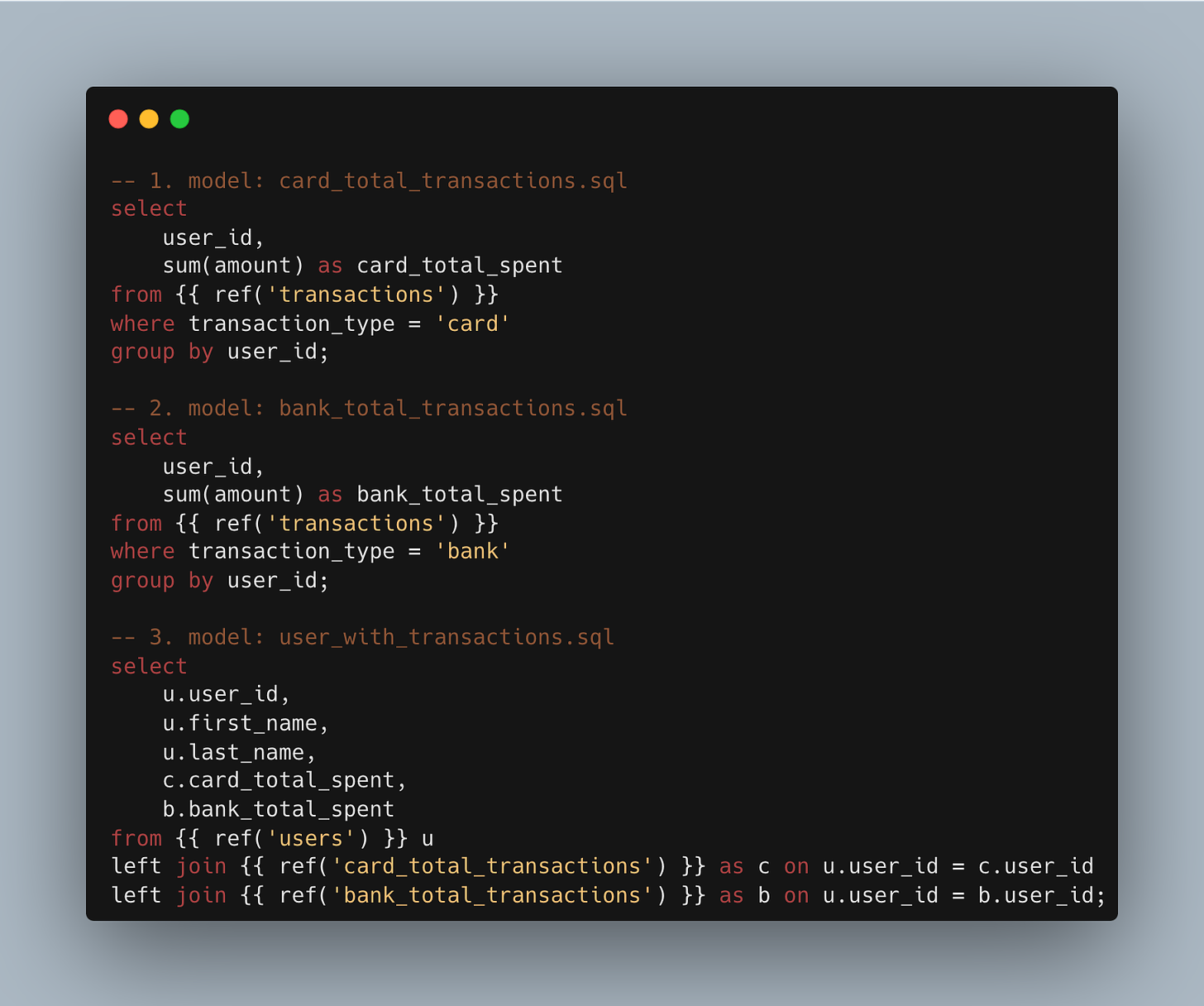Can SOLID Principles Revolutionize Your SQL and dbt Models?
Can SOLID Principles Revolutionize Your SQL and dbt Models?
Navigating the sprawling world of dbt models often feels like a high-stakes game. As your data architecture grows, managing it gets more complex.
But guess what?
There is a better way, and it's SOLID.
You might be wondering, "SOLID principles? In SQL?"
Absolutely!
Contrary to common misconceptions, SOLID principles aren't exclusive to object-oriented languages like Python. It's a game-changer for SQL and dbt models, making them functional and exceptional.
Intrigued?
Let's shatter those myths and show how SOLID principles can morph your dbt models from a tangled maze into a streamlined marvel.
Buckle up — time to level up!
Here’s what we are discussing this week:
The Misconception: SOLID Principles and SQL Don't Mix
A Cautionary Tale: Poorly Built dbt Models
Building dbt Models the SOLID Way
Quick Summary
Your Turn
Reading time: 5 minutes
The Misconception: SOLID Principles and SQL Don't Mix
So, we already discussed the SOLID principles. As always, I strongly recommend reading my introduction article and the Python example. And as always, I’ll give you a quick summary:
SOLID stands for Single Responsibility, Open/Closed, Liskov Substitution, Interface Segregation, and Dependency Inversion. These principles are the bedrock of clean, maintainable code, like a well-orchestrated symphony where each musician knows precisely when to chime in.
Sounds like a dream, right?
Well, it doesn't have to be limited to Python or OOP. The power of SOLID can be harnessed for your SQL and dbt models. Think of your dbt models like modular Lego pieces. Each has a defined role, yet they seamlessly integrate, forming a robust data architecture.
These universal principles are set to revolutionize your dbt models, breaking free from limiting beliefs. It's time to break free from the limiting beliefs that have shackled your dbt models.
Let's not merely debunk the myth; let's bury it once and for all.
A Cautionary Tale: Poorly Built dbt Models
Now, we already discussed SOLID principles. Twice! Let’s make it quick today.
You're looking at a textbook example from a fintech application designed to display card and bank transactions. It works, sure.
But can it handle growth?
I'm afraid not.
Here's why this code serves as a cautionary tale. First, these models are overloaded. Take card_total_transactions.sql for instance — it's pulling data from the source transactions, filtering it by transaction type, and then summing the amount. And bank_total_transactions.sql is mirroring the same structure but for bank transactions.
What occurs when you have to tweak the underlying logic for summing amounts?
You'll find yourself scrambling to update it in multiple places — a maintenance nightmare.
Now, look at user_with_transactions.sql. It joins users with their respective total card and bank spends. While this may seem logical, it’s a fragile approach.
What if you want to add other transaction types or additional details in the future?
Rewriting this model could put your existing data pipelines at risk.
In a nutshell, lacking SOLID principles makes your code not only hard to debug but also challenging to update and extend. You're dealing with inefficiencies and potential bottlenecks that could bring your analytics engine to its knees. Imagine having hundreds of models like these as your data grows.
Terrifying, isn't it?
Now, I have a short challenge for you. Do not look into the next section yet. Think for a second.
How would you refactor these models?
Ready?
Now, let’s compare our solutions.
Building dbt Models the SOLID Way
Let's consider refactoring card_total_transactions.sql and bank_total_transactions.sql into something more SOLID. Instead of stuffing the filtering and summing logic into one model, I separated the filter and sum logic into distinct models. I created a base model that handles the summing logic for all transaction types. Then, I built separate models for filtering card and bank transactions. This decoupling adheres to the Single Responsibility Principle, making each model easier to manage and update.
Here's how it might look:
See the difference?
Each model now serves a specific, unambiguous role, streamlining your debugging, updating, and — crucially — understanding.
What does your solution look like?
By applying SOLID principles like these, you're investing in the future. You're crafting dbt models that not only do their job but excel at it.
It's like having a supercharged engine ready to roar, no matter how winding the road ahead may be.
Ready to make this shift?
Quick Summary
Alright, you've come a long way!
You've navigated through the fog of myths surrounding SQL and SOLID principles. You Stared down the inefficiencies of typical dbt models and saw firsthand how applying those principles can be a game-changer. Achieving a robust, scalable, and maintainable data model is not just wishful thinking — it's entirely within your grasp.
So, what's the gist here?
While often linked with object-oriented languages like Python, SOLID principles have profound implications for your SQL-based dbt models. You simplify debugging, updating, and extending your code by being intentional about each model's role and responsibilities. You elevate your models from mere query containers to dynamic, robust structures.
Your Turn
The question isn't whether you should take the plunge but when.
Every delay piles on more tech debt — who needs that?
With every delay, you risk accumulating tech debt, and let's be honest, who needs more of that?
Take the plunge now to make your dbt models rock-SOLID!
Turn your shaky data models into unbreakable ones, and go from hesitant to confident. Your future self will thank you, and so will your team.
Did you enjoy that piece? Follow me on LinkedIn for daily updates.








